Creating a well-designed fence line not only defines your outdoor space but also transforms an ordinary boundary into a living, breathing feature of your garden. From practical raised beds to whimsical lighting, simple enhancements along your fence can boost curb appeal, support biodiversity, and provide functional benefits like privacy and shade. Whether you have a tight budget or ample space, these 20 ideas offer accessible ways to maximize your fence line’s potential with low-maintenance plantings, creative containers, and smart design techniques.
1. Build a Raised Bed Alongside Your Fence
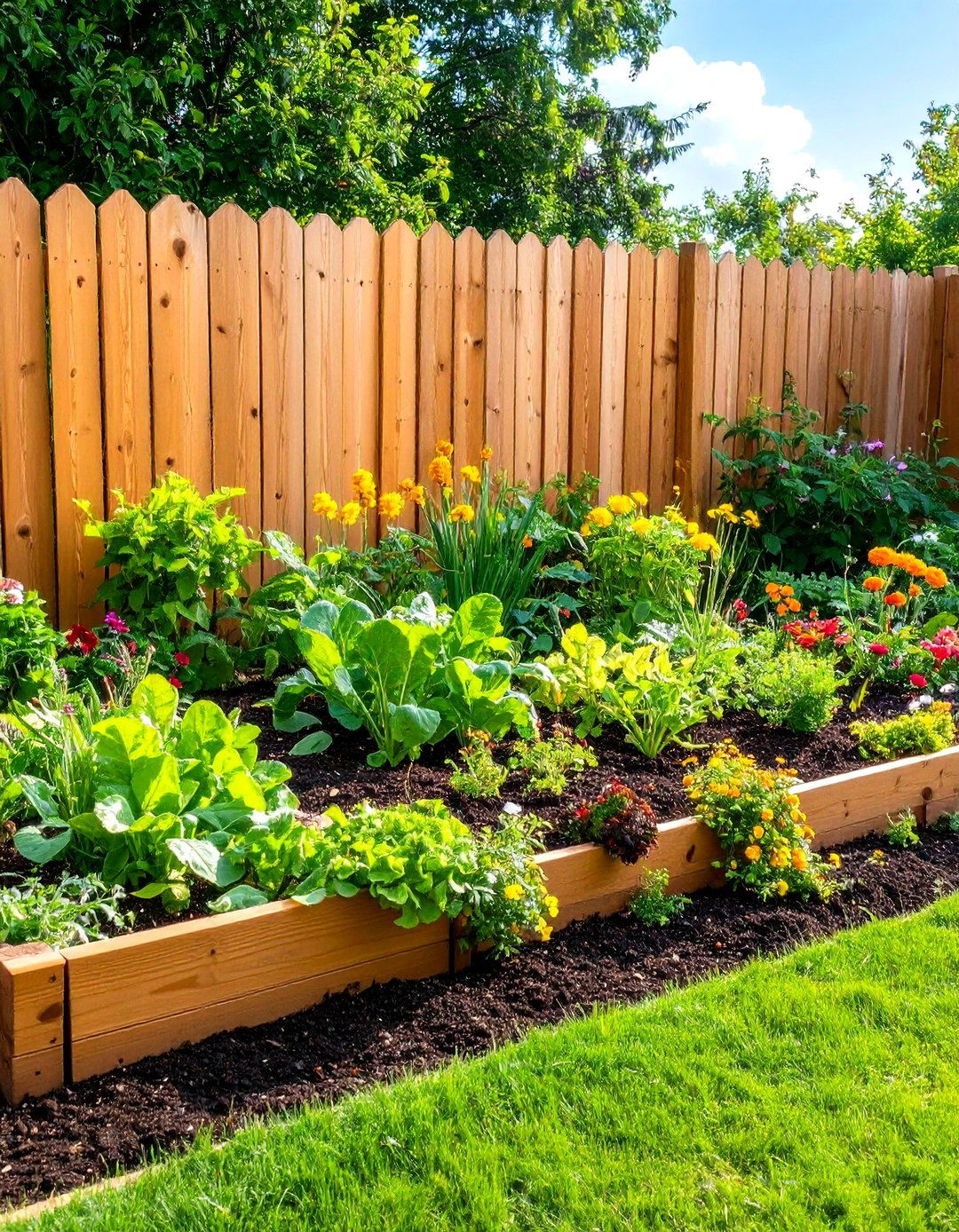
Constructing a shallow raised bed directly against your fence maximizes planting depth and keeps soil neatly contained. Start by framing the bed with rot-resistant timber or stone, then fill with rich, well-draining mix to encourage healthy root growth. This method elevates soil level, improving drainage in heavy clay ground and allowing for a wider plant palette, from vegetables to perennials. Additionally, the raised height makes maintenance tasks like weeding and harvesting easier on your back. Aligning the bed with the fence creates a clean, continuous line that anchors the garden design.
2. Support Flowering Climbers
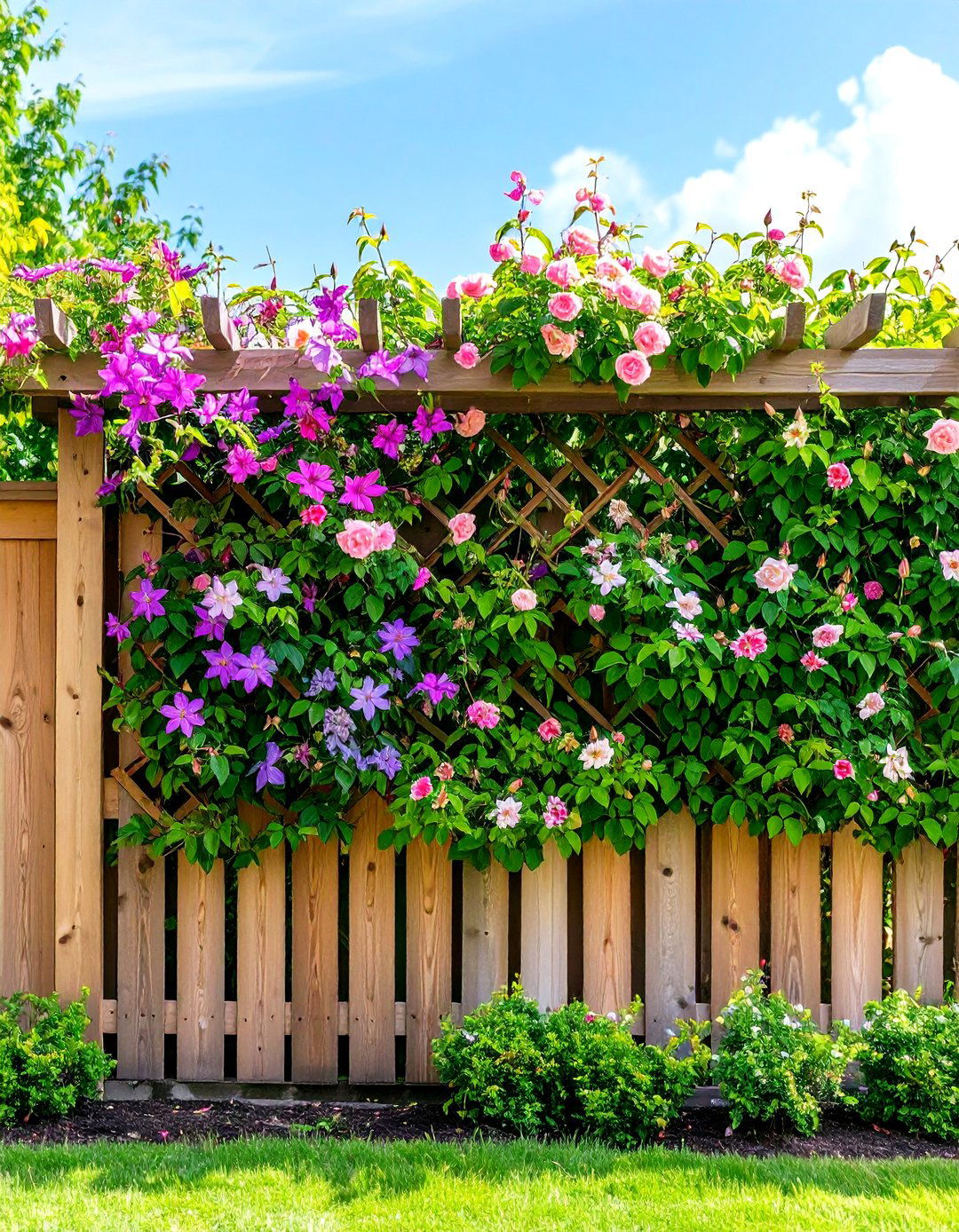
Climbing plants soften the appearance of a plain fence, adding seasonal color and fragrance. Install sturdy trellis panels or horizontal wires secured to the fence to guide vines like clematis, climbing roses, and honeysuckle. These structural supports encourage upward growth, ensuring even coverage without overloading any single point. Flowering climbers also attract pollinators, benefiting surrounding plantings. For optimal results, select varieties suited to your climate and fence orientation—sun-loving vines on south-facing fences and shade-tolerant species where light is limited. Regular pruning maintains airflow and prevents overcrowding.
3. Plant a Line of Standard Trees
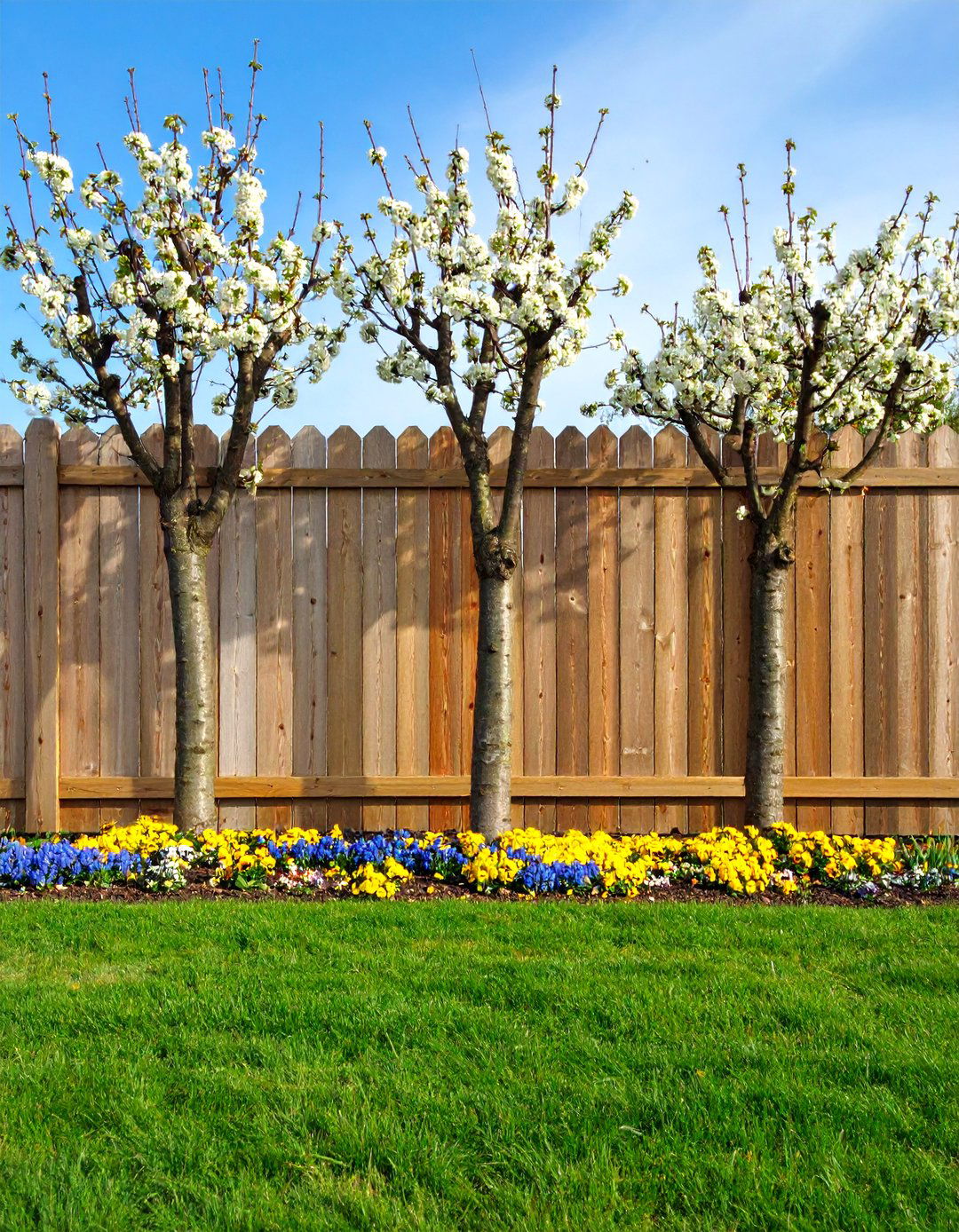
Standard trees—single-stem specimens pruned above head height—create an elegant living screen in front of a fence. Species like standard cherry, ornamental pear, or small maple varieties offer year-round structure with seasonal blooms or foliage interest. Plant them at regular intervals to establish rhythm and maintain sightlines over the fence. Beneath the canopies, low-growing groundcovers or bulbs provide color, while the trunks remain visible. This approach brings vertical height and architectural interest, transforming your fence into the backdrop for a mini orchard or formal garden avenue.
4. Create Layers of Greenery with Pots

Grouping pots of varying sizes along the fence line allows for flexible design and easy rotation of seasonal displays. Arrange taller containers at the back, mid-sized pots in the middle, and small planters up front to establish depth and continuity. Use materials like terracotta, galvanized metal, or woven baskets to introduce textural contrast. Potting mixtures should match plant needs—cacti and succulents in gritty mixes, moisture-loving annuals in peat-based compost. This layered container garden suits renters and those with compact yards, as pots can be moved or replaced without permanent alterations.
5. Incorporate Wildlife-Friendly Features

Enhance biodiversity by integrating bird feeders, insect hotels, and water dishes within your fence-side planting. Select native shrubs such as hawthorn or buddleia that offer nectar, berries, and shelter. Leave small dead wood sections for beetles and lacewings, and plant pollinator magnets like lavender and rudbeckia. Adding a shallow birdbath encourages songbirds, while bee bricks embedded in the soil or fence provide solitary bees with nesting sites. These features turn a simple fence line into a vibrant wildlife corridor, supporting essential garden ecosystems.
6. Opt for a Drought-Tolerant Design
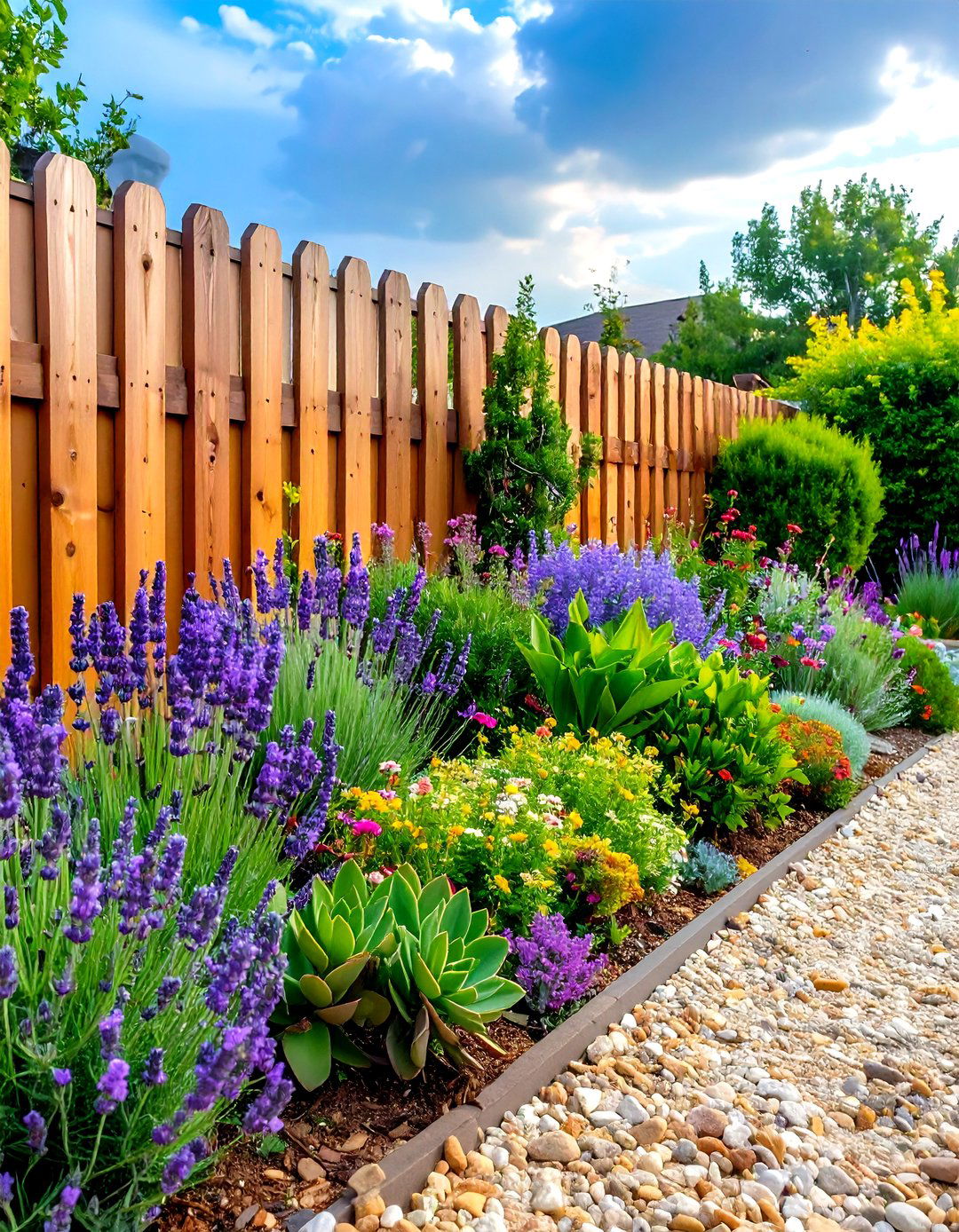
In regions with limited rainfall, choose xeric landscaping to minimize irrigation. Drought-tolerant plants such as lavender, Russian sage, and sedum thrive in dry, sunny spots. Incorporate gravel or decomposed granite mulch to retain heat and suppress weeds. Group species with similar water needs to simplify care. A minimalist palette of silvery foliage and muted blooms creates a contemporary look while demanding minimal maintenance. Drip irrigation systems further conserve water by delivering moisture directly to roots.
7. Add a Water Feature for a Focal Point
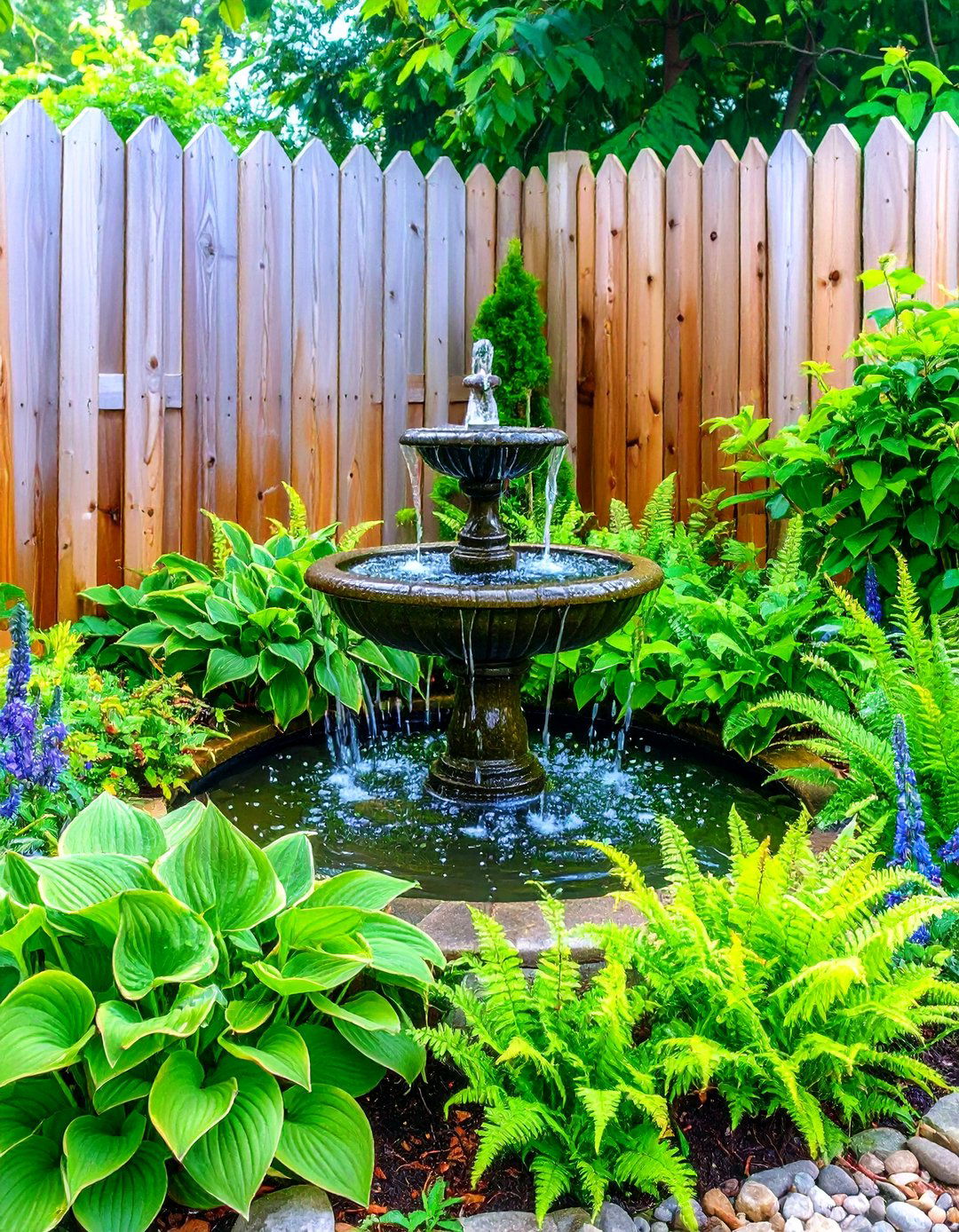
Introducing a small water feature—like a wall-mounted fountain or a freestanding basin—breaks up linear plantings and adds soothing sounds. Position it near the center or offset along the fence for balance. Surround the feature with moisture-loving plants such as hostas or ferns to soften edges and conceal plumbing. Reflective surfaces create the illusion of space in narrow gardens, while moving water deters pests like mosquitoes. Annual cleaning prevents algae buildup, ensuring clear, healthy water.
8. Install a Vertical Herb Garden

Hanging a series of hooked planters or pocketed fabric trellises on your fence provides easy access to fresh herbs. Fill containers with a mix of mint, thyme, rosemary, and sage, positioning them where you’ll use them most—ideally adjacent to an outdoor cooking area or patio. Vertical herb gardens save ground space and make harvesting convenient. Regular pruning maintains plant health and encourages bushy growth. Ensure consistent watering, especially in warm weather, and replace containers seasonally to refresh soil nutrients.
9. Create an Airy Pollinator Border
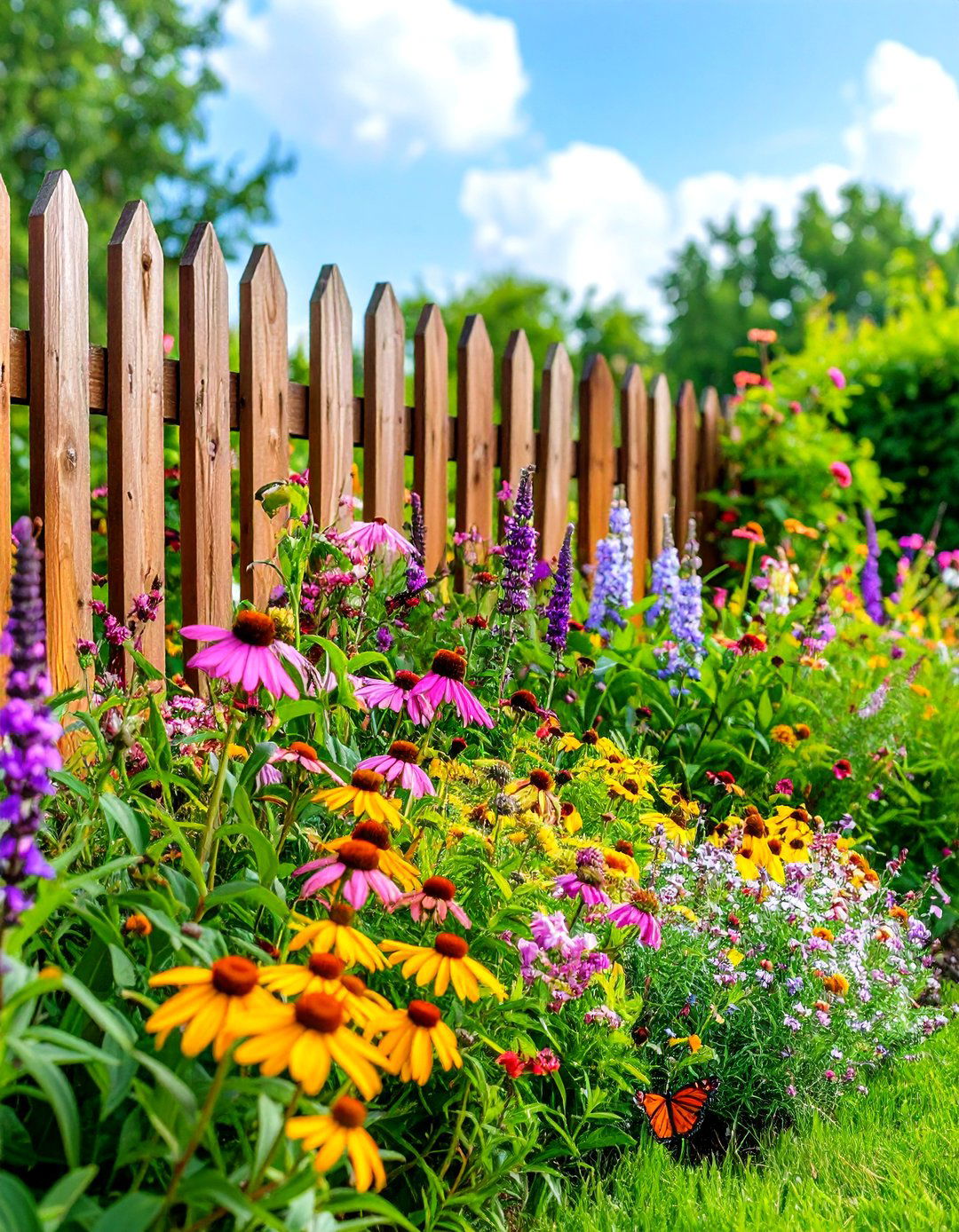
Planting a pollinator-friendly border invites bees, butterflies, and beneficial insects to your garden. Begin with a low stone or brick edging to define the bed, then fill with a mix of perennials such as echinacea, salvia, and gaura. Open-rail or spaced fences allow winged visitors easy access. Avoid pesticides and choose native species to support local ecosystems. A continuous sequence of blooms from spring through autumn ensures a steady food source. Enhanced biodiversity improves pollination rates for fruiting plants elsewhere in the yard.
10. Grow a Flowering Hedge
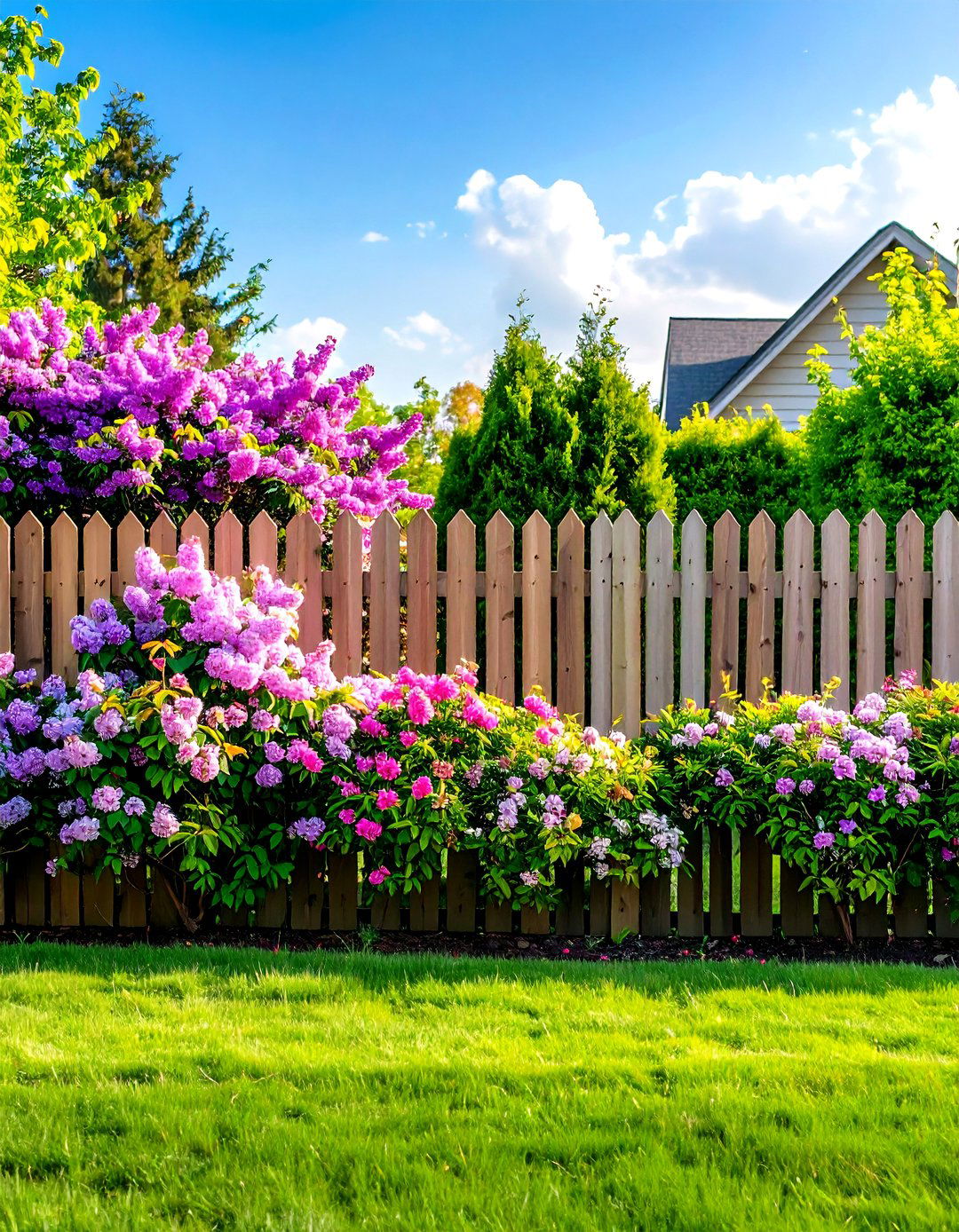
For privacy and structure, plant a dense flowering hedge in front of—or as a living fence alternative to—your existing barrier. Fast-growing shrubs like cherry laurel, viburnum, or lilac provide seasonal color and fragrance. Prune annually to shape and maintain thickness, ensuring a uniform wall of foliage. Underplant with shade-tolerant groundcovers or spring bulbs for layered interest. A flowering hedge softens the look of wooden or metal fences while offering habitat for wildlife and additional noise reduction.
11. Create a Curving Flower Bed Border
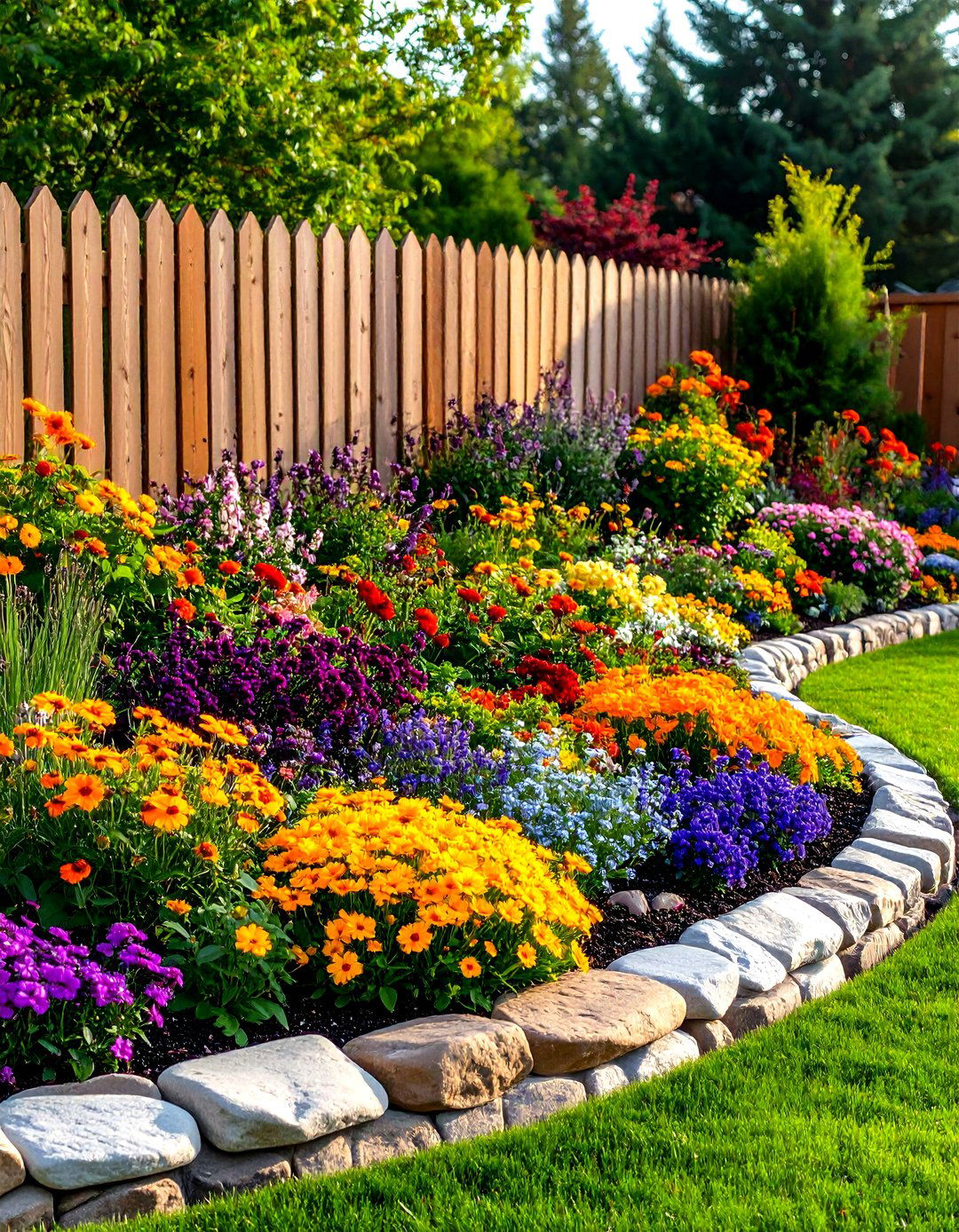
Instead of a straight line, introduce gentle curves to your fence-adjacent planting for a naturalistic feel. Use low retaining walls or edging materials like stone to define the curves. Fill the bed with a blend of perennials and annuals to ensure consistent coverage. The curvature softens hard edges and leads the eye through the garden, creating the illusion of a larger space. This design works well with mixed heights, from compact groundcovers to medium shrubs, adding depth and movement.
12. Opt for a Succulent Border

In warmer, arid climates, line your fence with a tapestry of succulents. Plant aeoniums, echeverias, and sedums in well-draining soil, mixing forms and colors for visual impact. Gravel mulch prevents rot by reducing moisture retention at the base. Decorative pots or troughs add height variation and make maintenance easier. Succulent borders require minimal watering once established and provide year-round interest with architectural foliage and occasional blooms.
13. Mix Up Textures with Grasses and Shrubs
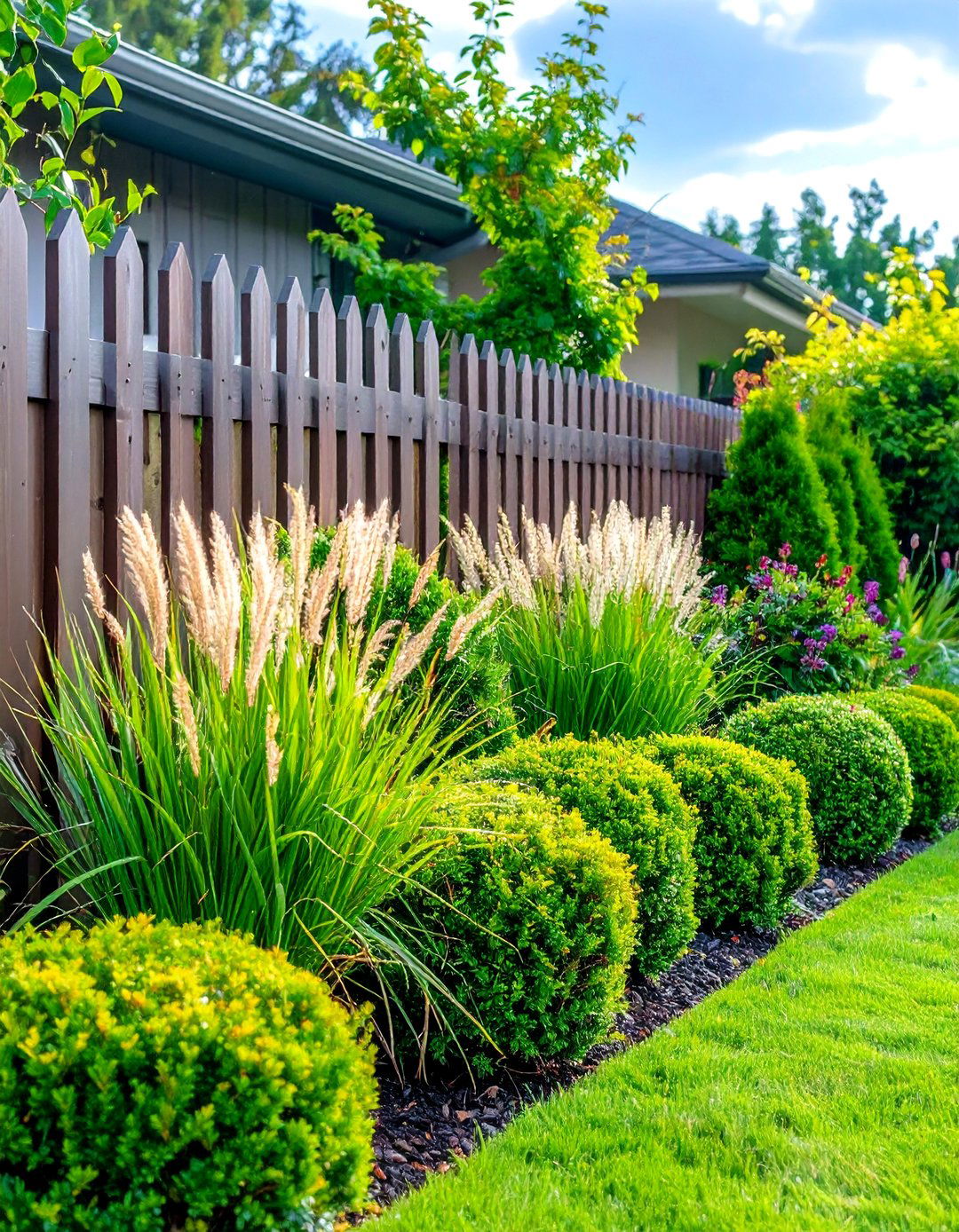
Balance structural shrubs like boxwood or holly with ornamental grasses such as miscanthus or fountain grass. The contrast between rigid forms and flowing blades creates dynamic movement, especially in breezes. Layer grasses in front of evergreen shrubs to maintain year-round appeal, and intersperse with flowering perennials for seasonal color. Textural diversity adds dimension to long fence runs and enhances the sensory experience with varied foliage shapes and sounds.
14. Plant an Arborvitae Screen
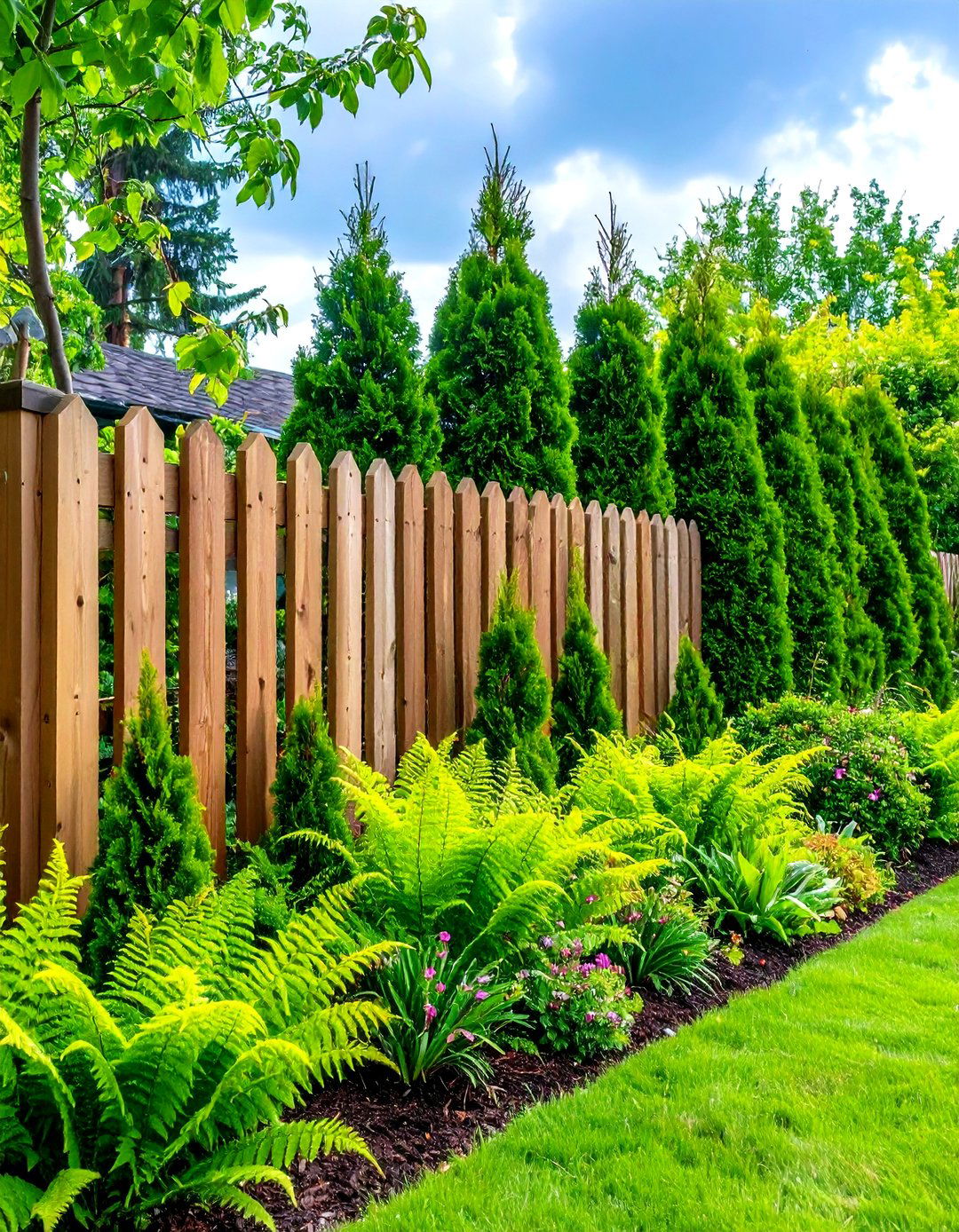
Arborvitae varieties like ‘Green Giant’ create a fast-growing evergreen wall when planted in a row. Position them close enough for a dense screen but far enough for mature spread—usually three to five feet apart. Their vertical growth habit accentuates the fence and mutes background noise. Underplant with shade-tolerant bulbs or ferns for spring interest, then mulch heavily to conserve moisture. This low-maintenance evergreen option ensures privacy and visual continuity year-round.
15. Paint Your Fence a Bold Color
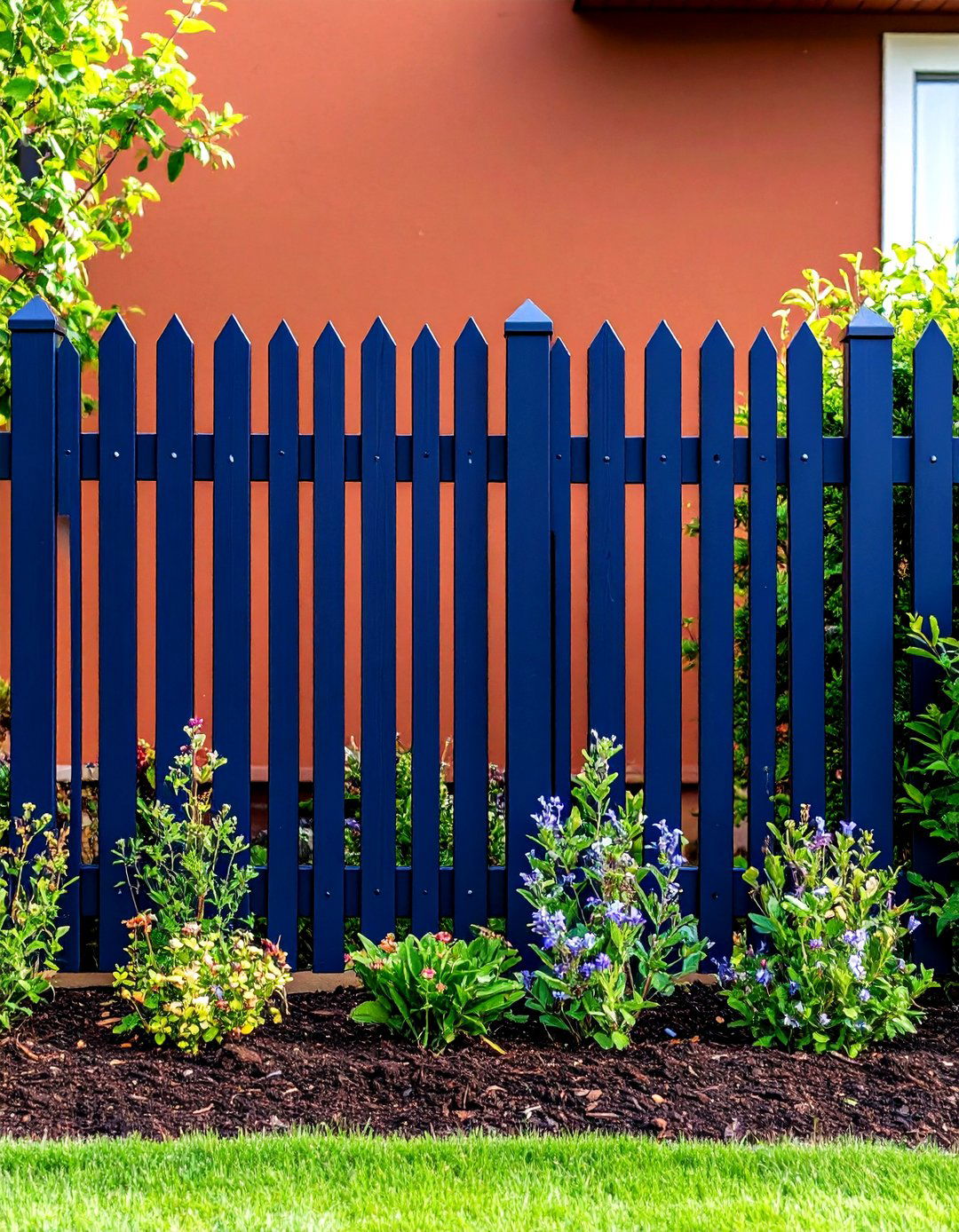
A fresh coat of paint transforms a weathered fence into a striking backdrop. Choose a bold hue—navy blue, charcoal, or even terracotta—to create contrast with greenery and blooms. Matte finishes lend a modern look, while gloss highlights texture. Use exterior-grade paint and primer to ensure longevity. A painted fence not only refreshes your palette but also protects wood from moisture and UV damage, extending the life of your barrier.
16. Hang Decorative Planters and Lanterns
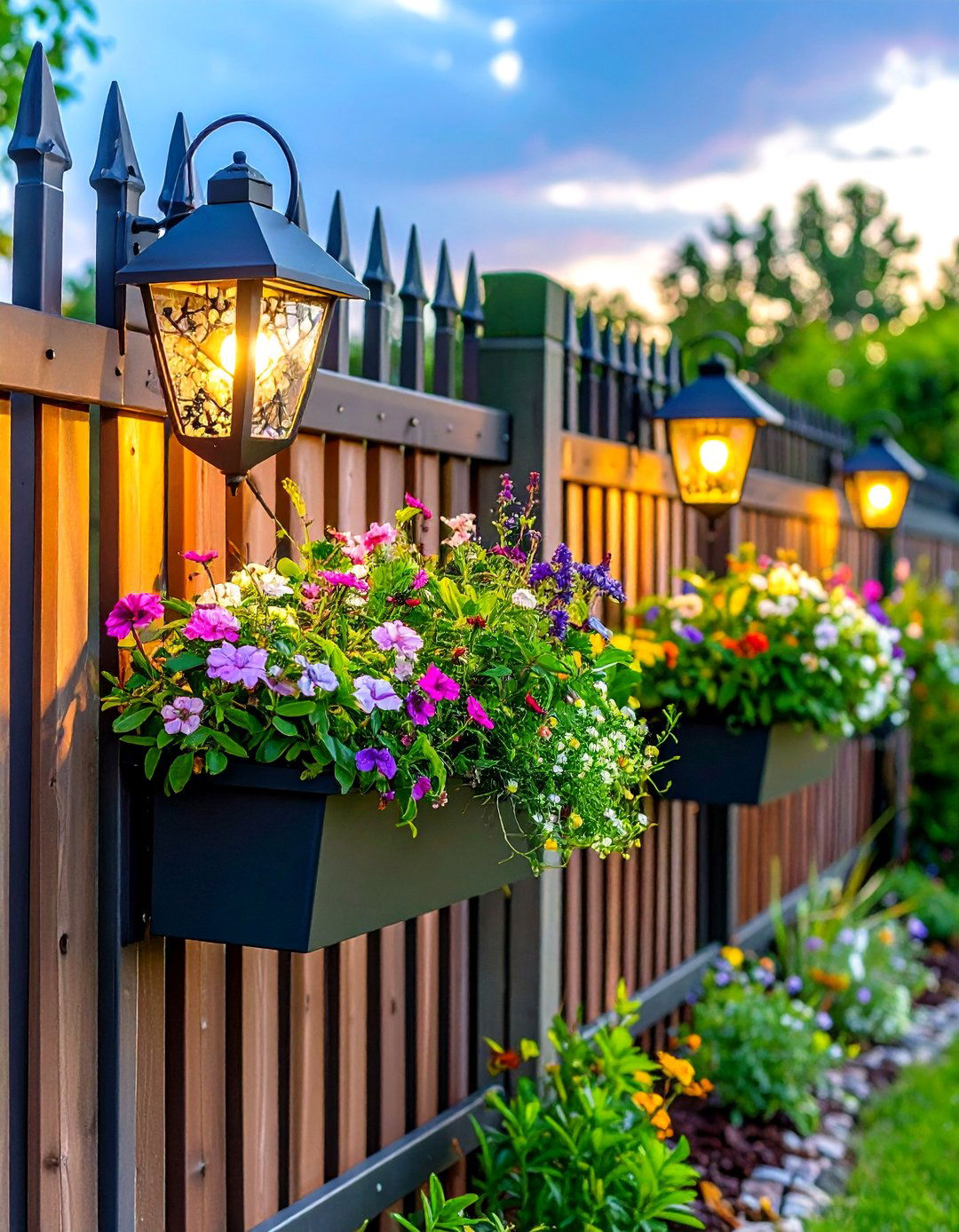
Attaching decorative metal or ceramic planters directly to fence panels introduces spot accents of color and texture. Intermix with hanging lanterns—solar or battery-powered—to cast ambient light among your plants. Change containers seasonally, switching from pansies in spring to ornamental kale in autumn. Lanterns nestled among planters create a cozy, layered look and encourage evening use of your garden. Ensure secure hooks and brackets to support weight safely.
17. Create a Gravel Pathway with Interplanting
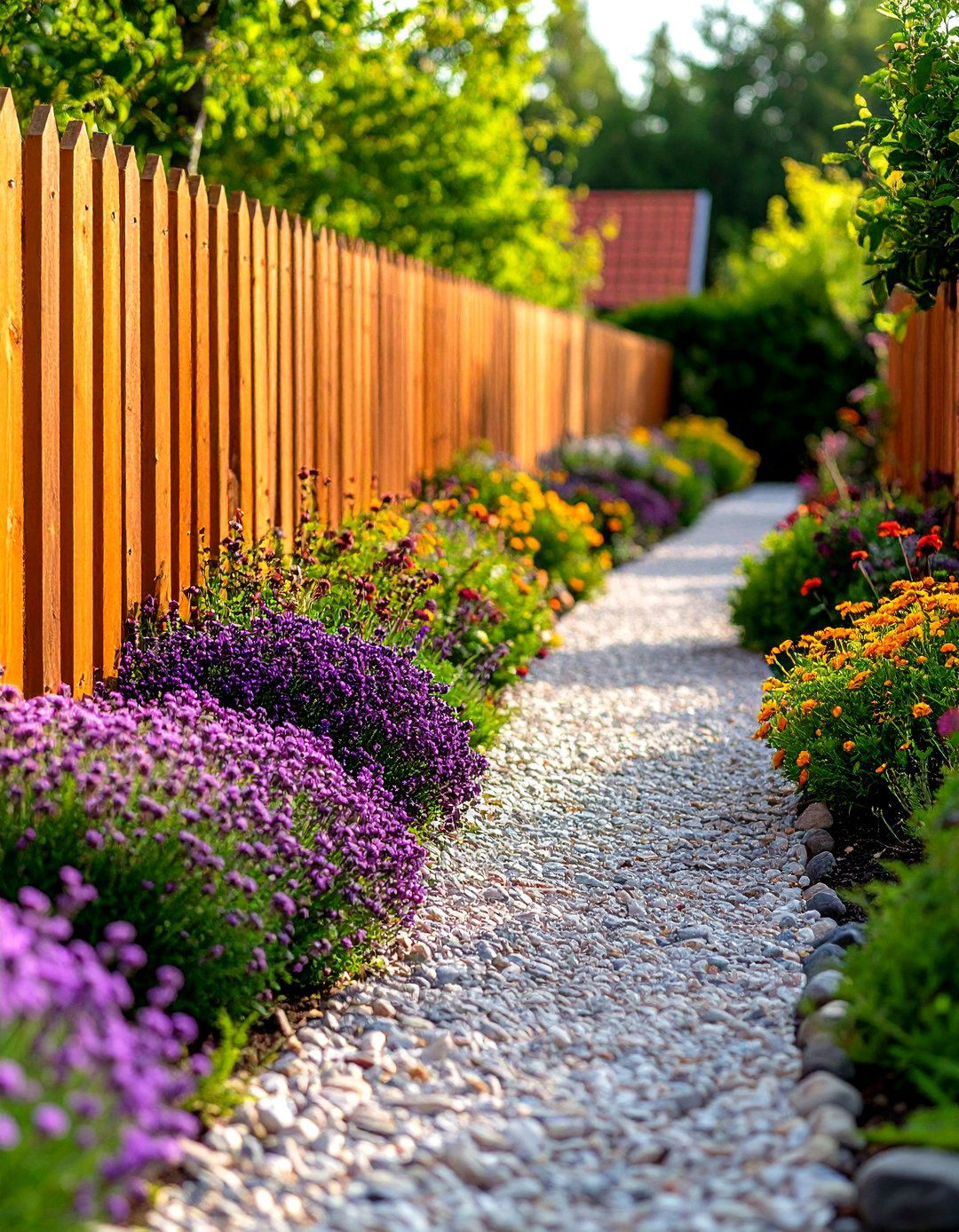
Lay a narrow gravel pathway along the fence line, edged with low-growing plants such as thyme, sedum, or creeping phlox. The combined textures of stone and greenery draw the eye along the boundary, making narrow gardens feel more expansive. Gravel provides excellent drainage and suppresses weeds, while interplanting softens hard edges. Select contrasting gravel colors to complement plant foliage for added visual interest.
18. Establish an Edible Fence Border
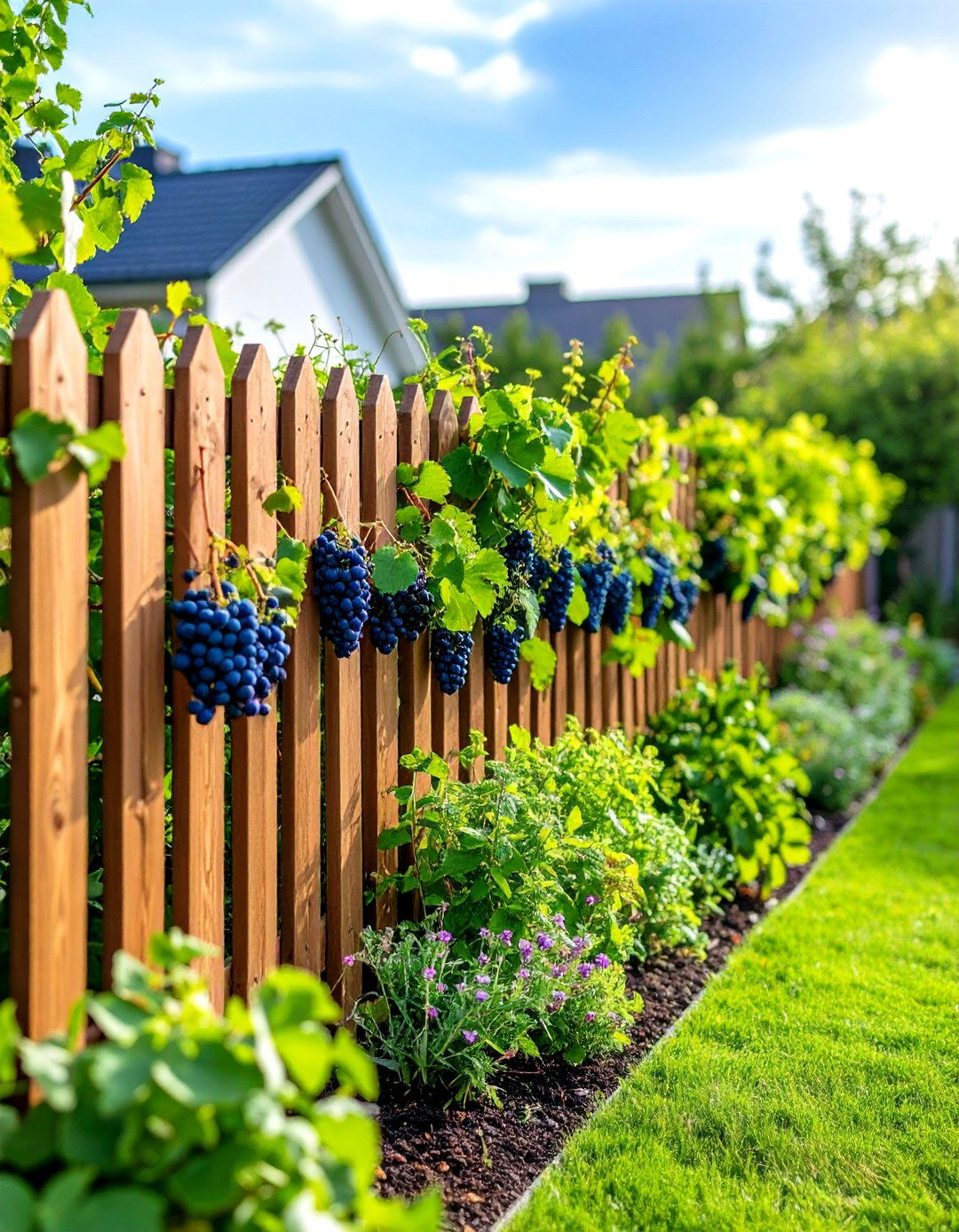
For a functional twist, plant fruiting shrubs and vines—blueberries, raspberries, or grapevines—in front of your fence. Use sturdy supports for vines and space shrubs according to mature spread. Layer with annual herbs or salad greens in front for continuous harvest. This edible edge supplies fresh produce and seasonal blooms, while the fence offers structural support. Regular pruning maintains productivity and prevents overgrowth.
19. Choose Deer-Resistant Foliage

In areas prone to deer browsing, select unpalatable plants such as lavender, Russian sage, and ornamental grasses. These species have aromatic foliage or fibrous textures that deter deer. Combine them with thorny shrubs like barberry or holly for additional protection. Planting deer-resistant species reduces the need for fencing upgrades or repellents, ensuring your border remains intact and visually appealing.
20. Integrate Fence Lighting

Illuminate your fence line with simple, low-voltage or solar-powered fixtures to extend garden enjoyment after dark. String lights woven through lattice panels offer a festive touch, while fence cap lights provide discreet downlighting. Uplighting planted specimens highlights textures and shapes, creating dramatic focal points. Strategic placement—such as path illumination or accent lighting on a water feature—enhances safety and ambiance. Solar fixtures simplify installation, requiring no wiring, while mains-powered systems deliver consistent brightness.
Conclusion:
From raised beds and flowering climbers to vibrant paint and ambient lighting, these 20 simple fence line landscaping ideas demonstrate that any boundary can become a standout feature. Whether you seek structure, privacy, wildlife habitat, or edible offerings, thoughtful plant selection and design techniques transform fences into dynamic garden elements. By combining vertical interest, layered textures, and practical enhancements, you can create a cohesive outdoor space that delights year-round and reflects your personal style.


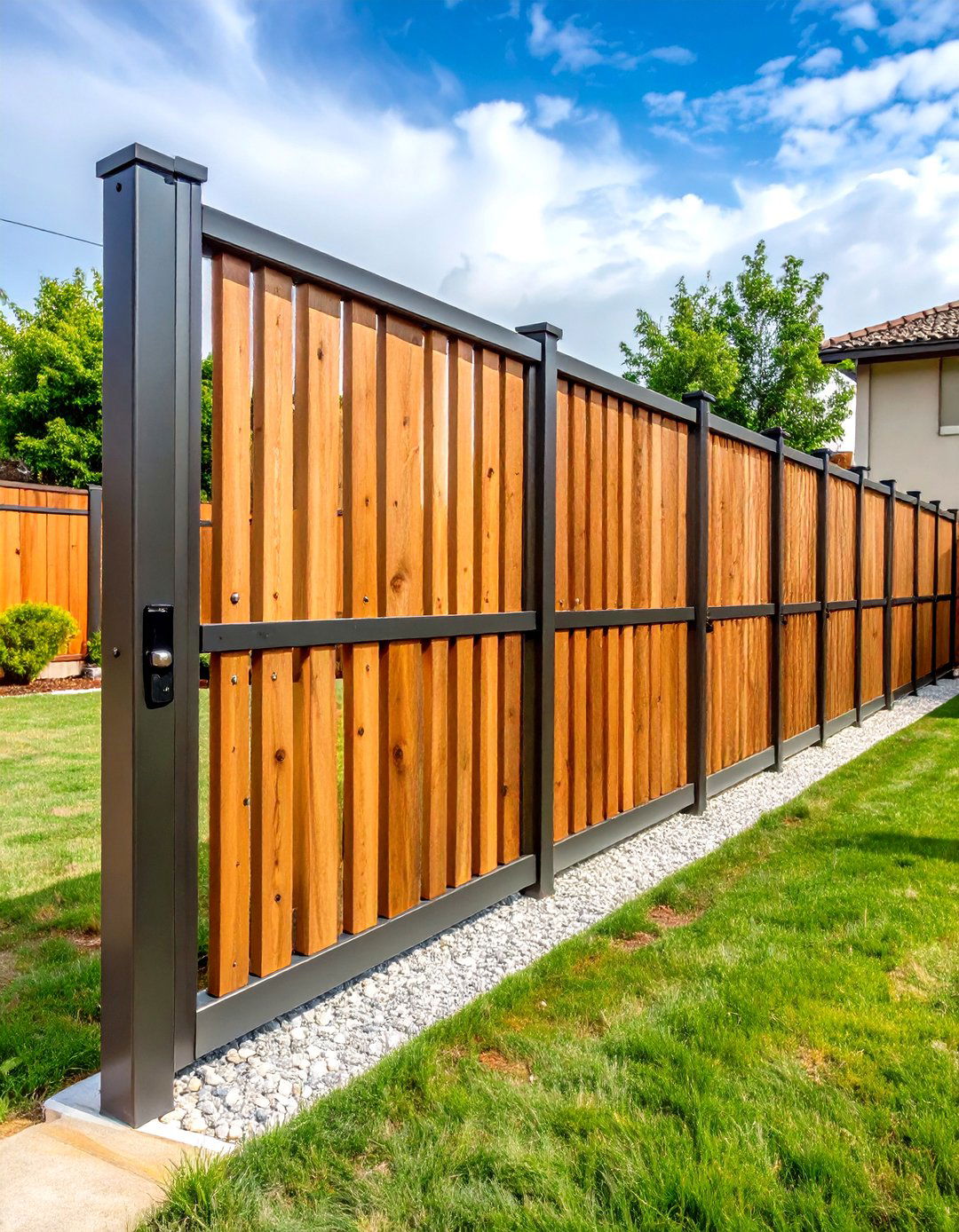
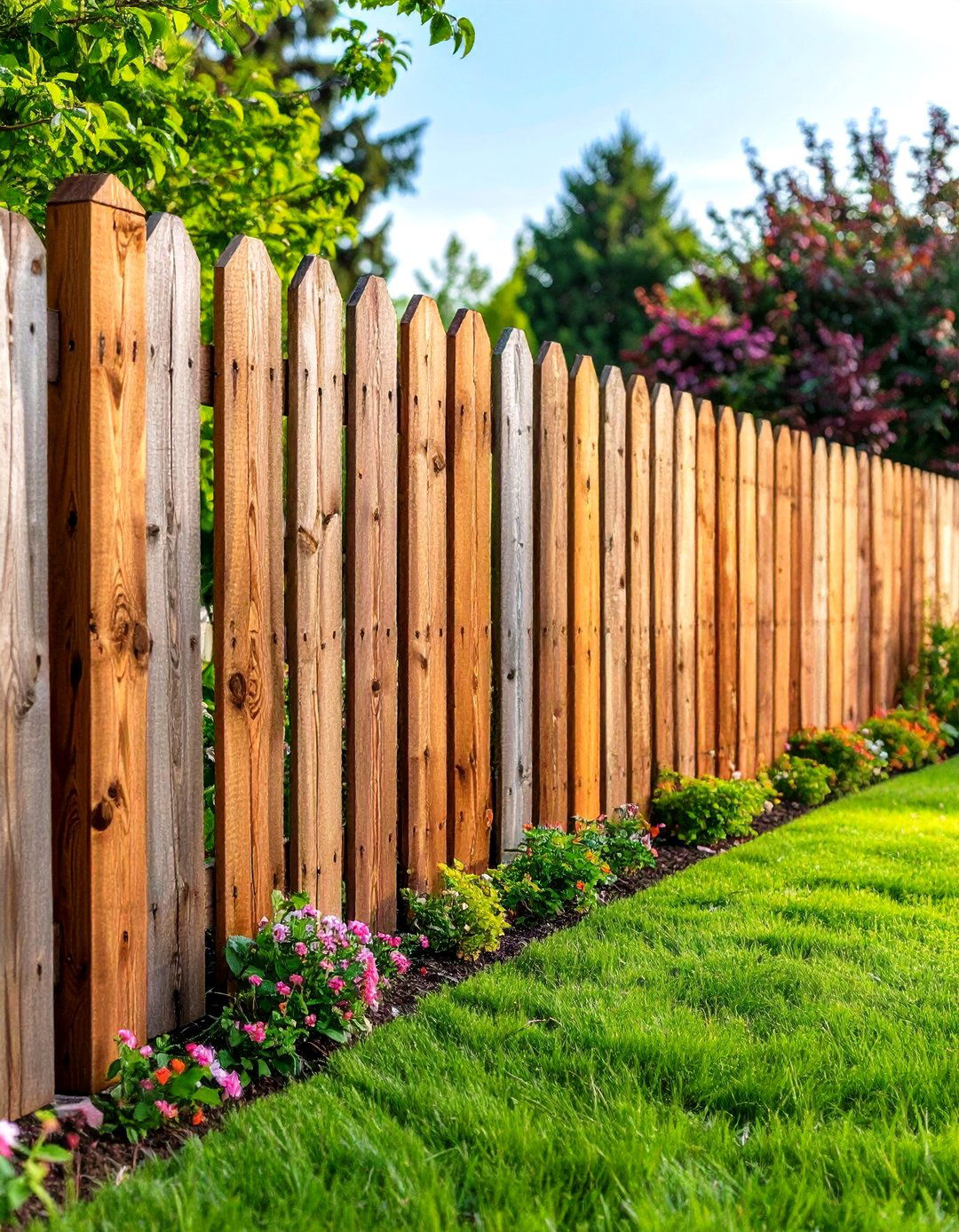


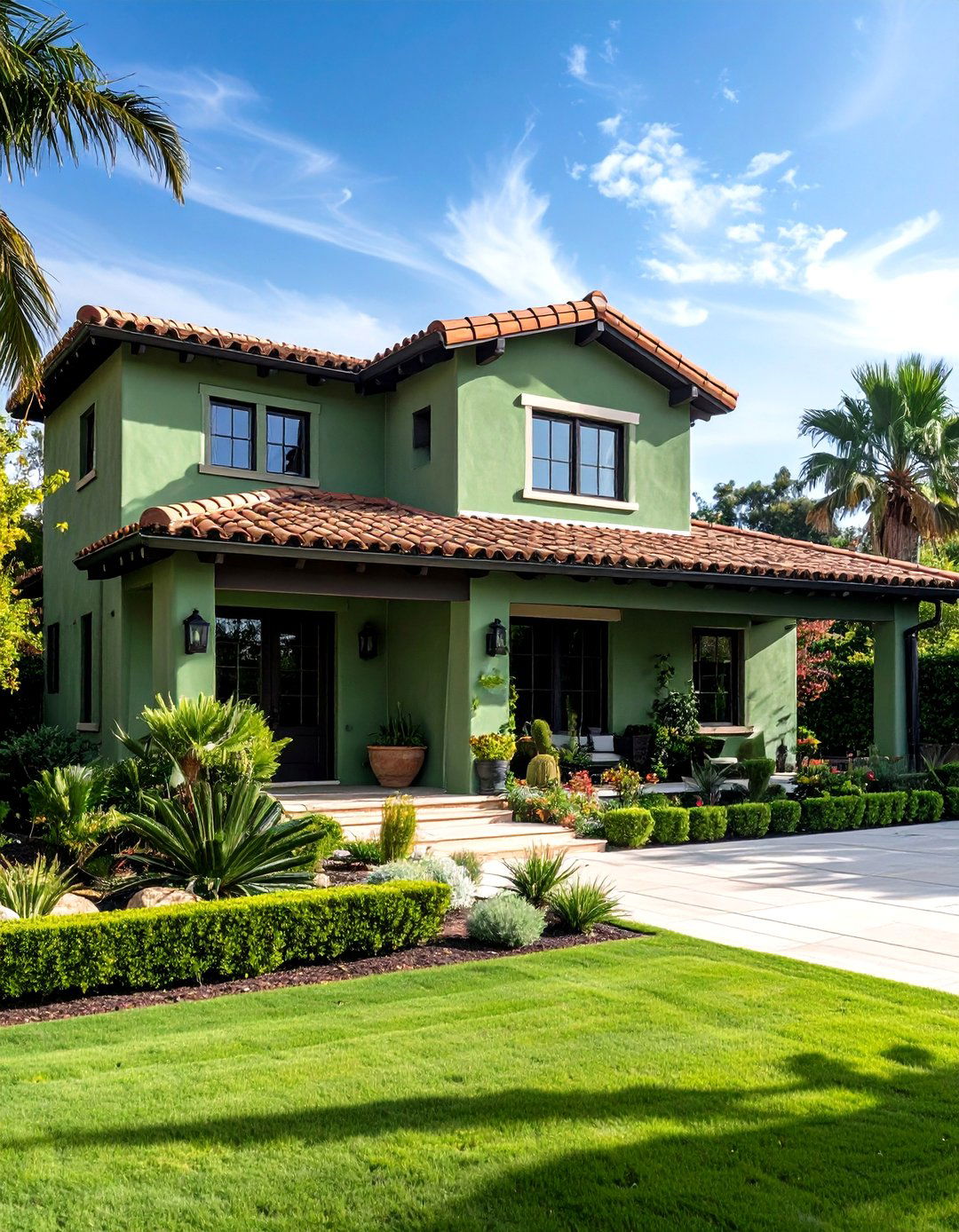
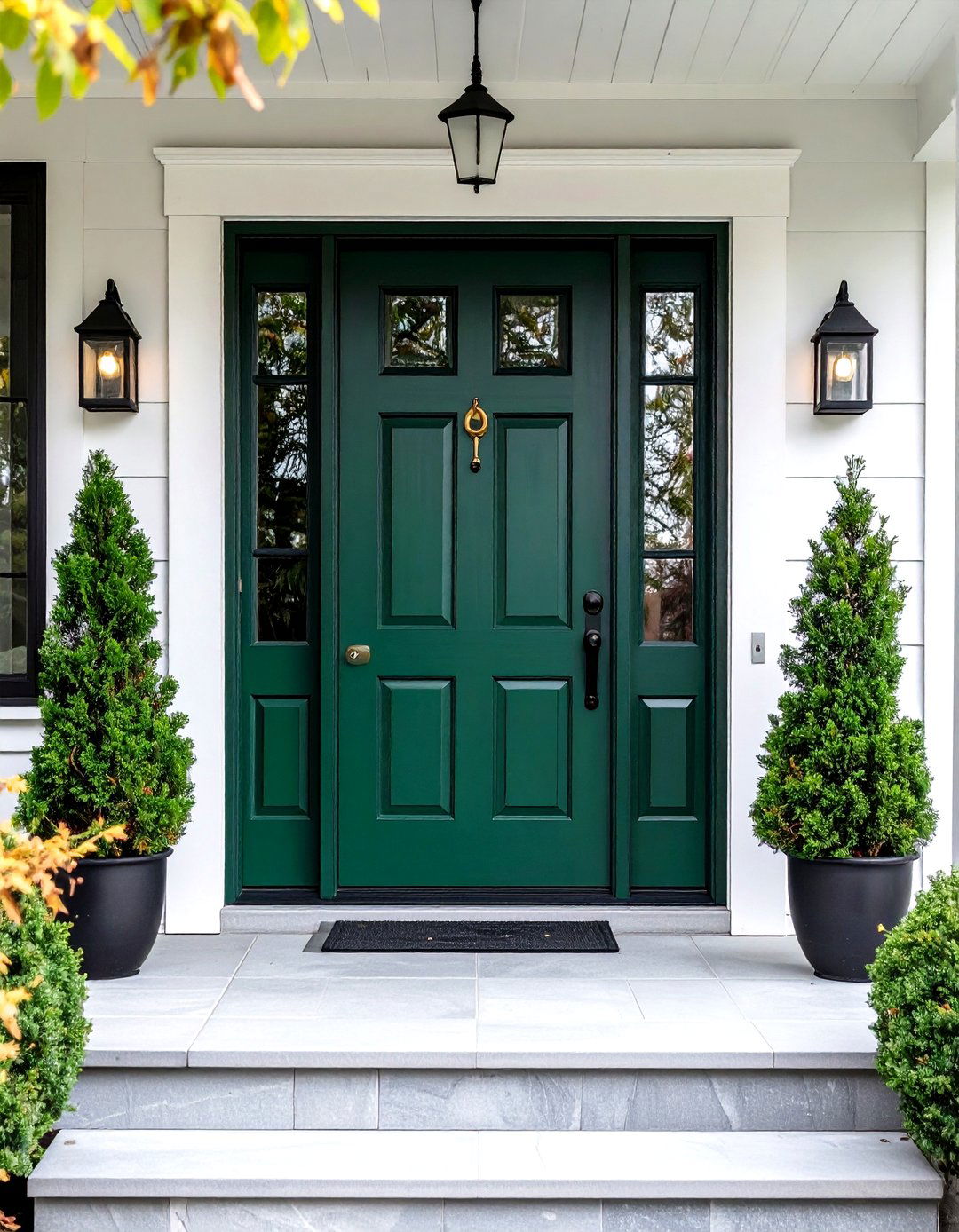
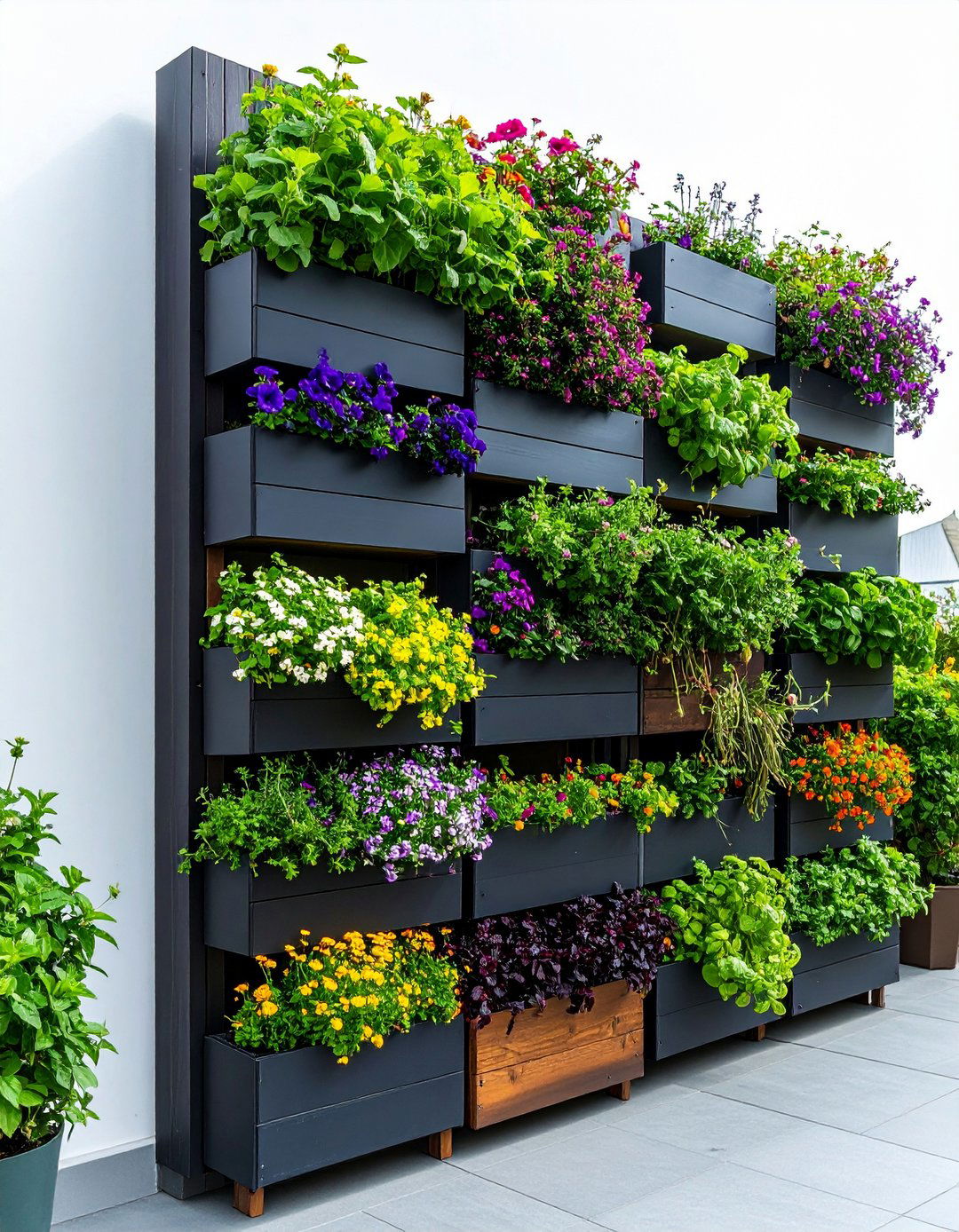

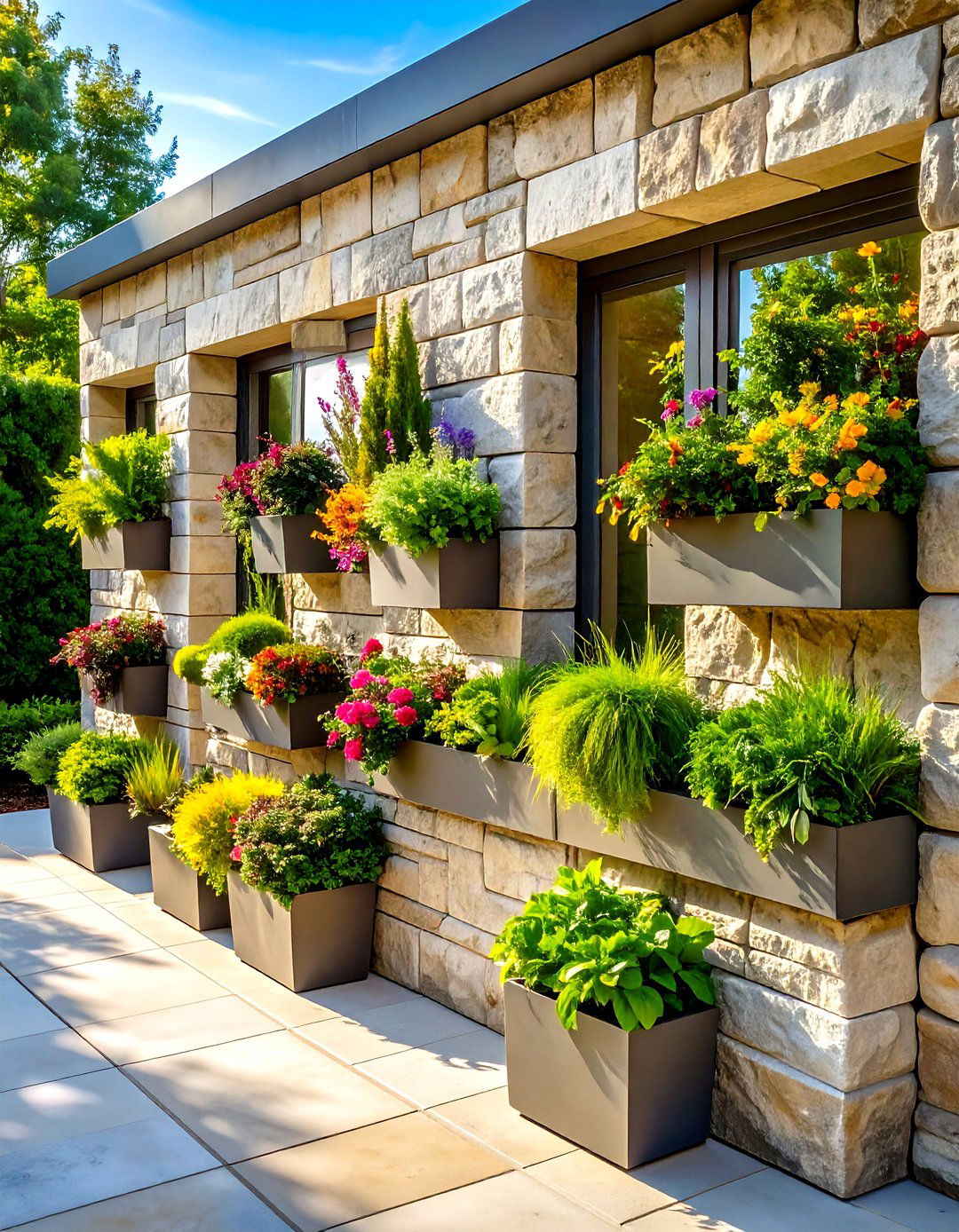
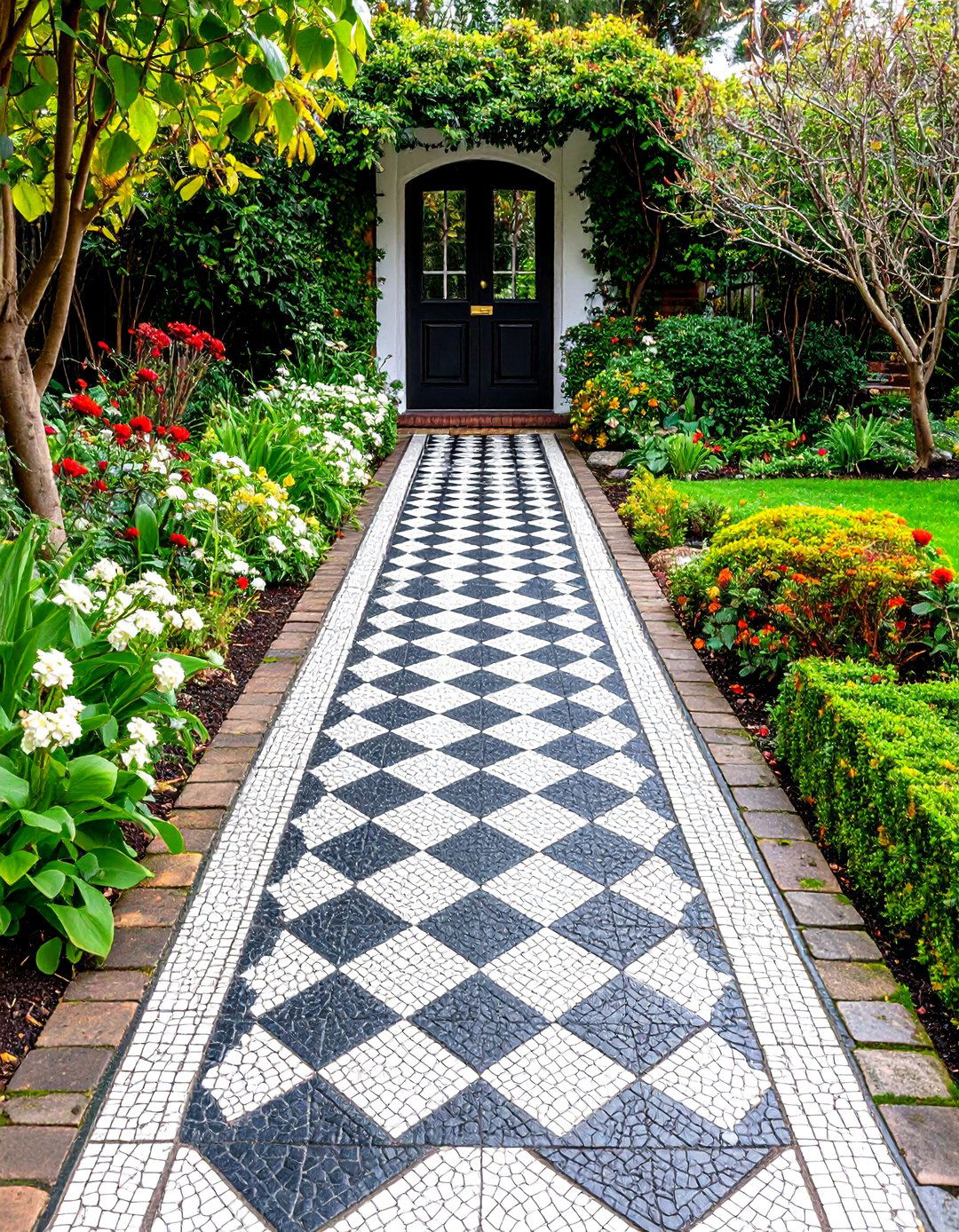
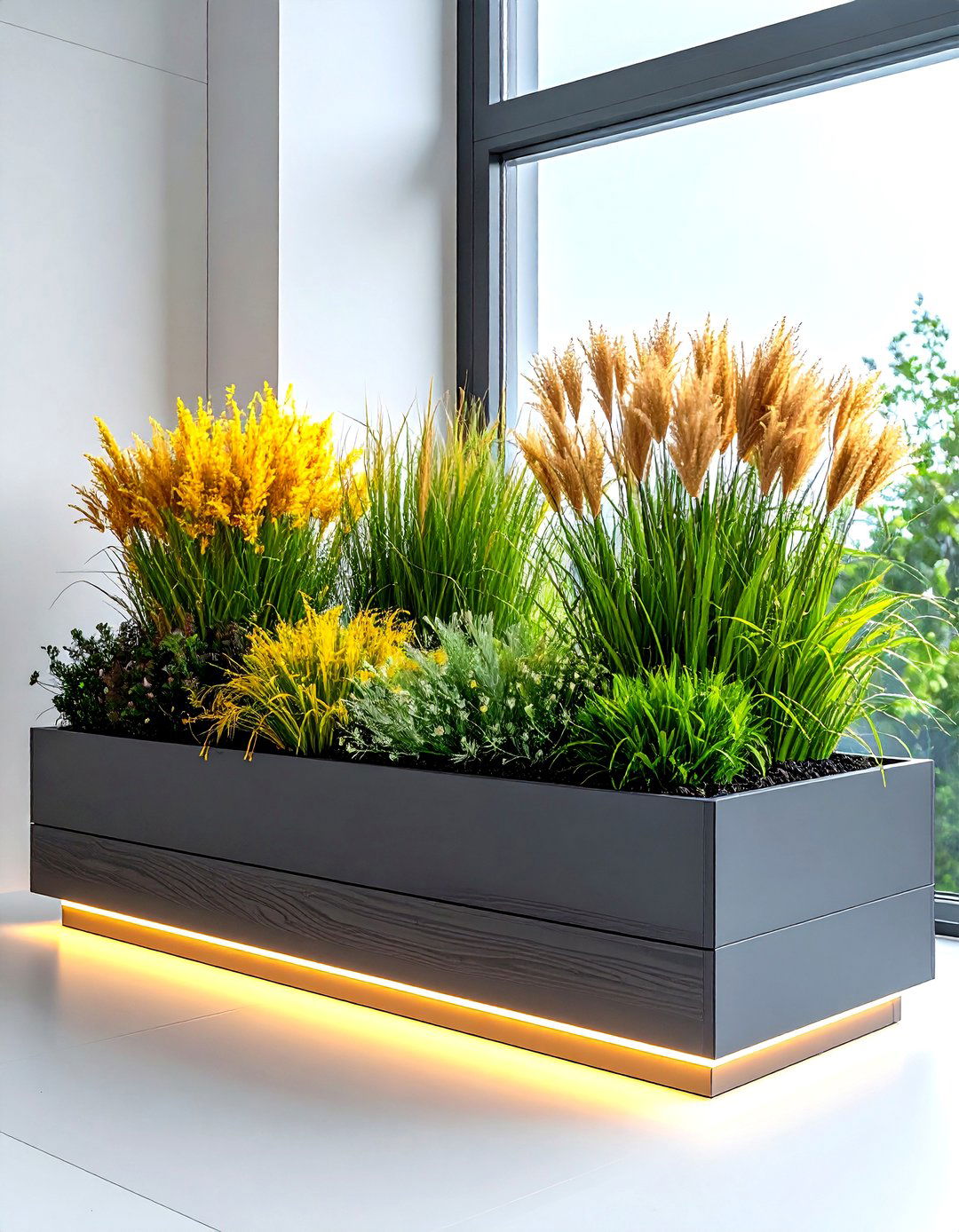

Leave a Reply